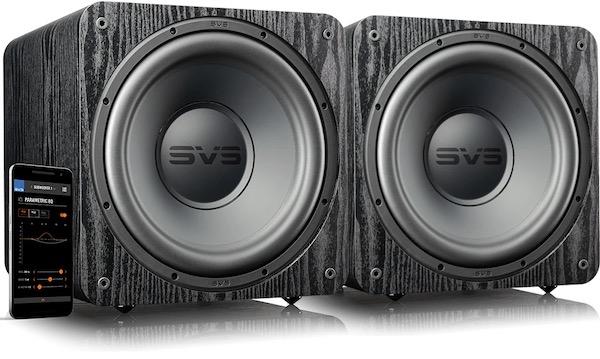Subwoofer Setup Steps

But positioning one or more subwoofers for the best results is a chore that takes time and patience. Subwoofers are relatively rare in 2-channel systems, which is unfortunate because they can achieve soul-satisfying bass while limiting the need for hulking, and expensive, front left and right loudspeakers.
But 2-channel audiophiles often treat subwoofers with disdain. If they use them at all, more often than not they're poorly positioned, leading to the misconception that subwoofers are slow and boomy. They're neither, unless they're poorly designed, improperly positioned, or both. There's no such thing as "slow" bass, but a subwoofer can sound slow if insufficient effort went into the setup.
I won't jump here into an endless discussion about proper subwoofer setup. But mentioning a few basics will be useful to new readers and perhaps helpful to more than a few veteran readers as well.
The most common approach, seemingly intuitive to 2-channel audio fans (but more often wrong than not) is to place the sub midway between the left and right speakers or, if there are two subs, place one near the left speaker and the other near the right. Setting up the latter pair as stereo subs is also a popular option for the subset of audiophiles who recognize the benefits of subwoofers. But stereo subwoofers are controversial. The lack of experimental confirmation of its effectiveness is clearly described in Floyd Toole's seminal book, Sound Reproduction (pg.238: Stereo Bass: Little About Even Less). The correct placement for smooth, in-room bass performance with multiple subwoofers is rarely up front next to the main left and right speakers. I've never heard any adverse effects from using a pair of displaced subs driven together in mono. In my room, in fact, the best positions for two subs actually puts one of them in the back of the room behind the seating area!
The most commonly suggested method to determine the best location for a subwoofer is the subwoofer crawl, which makes use of the concept of reciprocity. Place the subwoofer at your listening seat at ear height. That might be a little impractical today with the growing size of subwoofers; you might have to move your main listening chair out of the way and then (with help!!) wrestle the sub onto a strong table where it will sit at the same height your ears would be in the same location. Next, using bass test tones at various frequencies up to around 100Hz (our sister publication Stereophile offers test CDs with such tones). You then crawl around the room sampling different, hopefully practical locations with your ears at the position and height the subwoofer would be during normal listening. Mark the position offering the smoothest response and move your subwoofer there.
I've always found this approach rather crude and definitely not useful for multiple subs positioned in different locations. The latter is strongly recommended as a way to provide good results at more than one listening seat. A common setup for two subwoofers locates one of them in diagonally opposite corners (or, with 4 subs, one in each corner of the room). The latter, of course assumes that your room has four useable corners (my room has exactly one!). But even if this is practical there's a problem with it. Locating a subwoofer in a corner will excite all of the room's bass modes. The modal pattern will depend on the size and shape of the room. If these modes are close together this can work and also offer a sometimes useful, acoustical boost to the bass. But if the bass room modes aren't close together (and more often than not they aren't), the result could well be boom and muddiness untreatable at more than one seating position. Positioning two subs at the midpoints of the front and back walls (or one third of the way along the front (and back walls when four subwoofers are involved) are likely better choices. But all of these options (thoroughly described in Floyd Toole's book referenced above) really only work predictably in closed, rectangular rooms.
Any way you cut it, properly positioning subwoofers in most domestic rooms requires experimentation. If you're seeking just the best result at the primary listening seat the job is will be easier, but likely not quick. If you want decent results in several seats the job is harder, though not impossible. It also helps if you have a way of actually measuring the result. For this I recommend either a free computer program called Room EQ Wizard (PC or Mac) used together with a calibrated microphone such as the popular UMIK-1 (about $100), or the Omnimic program from Parts Express ($300, PC only, complete with a dedicated, calibrated microphone). Either one will vastly improve the reliability of (and shorten the time to complete) your results. In a pinch, a sound pressure level meter can work, but it can be dicey. The old and now unavailable Radio Shack meter, for example, was known to be relatively unreliable at the low frequencies we're dealing with here. There are downloadable SPL meters for iOS or Android phones, but I won't hazard a guess about their reliability for this job.
If your AVR or preamp processor offers a room EQ feature (and today most do) it's worth the time needed to use it. There are several different versions, the most common being Audyssey and Dirac Live. It may take several tries with a room EQ program to achieve the best results, but always begin by first manually finding the best location(s) for your sub(s) using the above techniques. This will minimize the work the room EQ is asked to do.
All such room EQ systems allow room for creative variations. Flat response at the listening seat or seats is rarely desirable. A mild bump-up in the bass response below 100Hz, together with a mild roll off above 8-10kHz, seems to work best for many listeners. I recently reviewed the latest variation of Audyssey, known as Audyssey MultEQ-X. No sneak peaks here (the review will appear presently online and/or in print), but I achieved remarkable results in my very large, asymmetrical room using a pair of large, physically displaced subwoofers and my Monitor Audio Silver 10 loudspeakers. Better results, in fact, than I've ever achieved before. The rest of the system (center, surrounds, etc.) was similarly EQ'd, though MultEQ-X lets you equalize any or all of the channels separately if desired.
Normally I limit room EQ to below 300Hz, the region where the room dominates the sound. But the result here was so effective it had me reconsidering using full-range EQ at least for personal listening. But not with loudspeaker reviews for obvious reasons, though even there I often equalize below 300Hz to smooth out a known major peak in my room between 100-200 Hz that can lead to misleading conclusions about a loudspeaker's performance. Some listeners like an emphasis in this region; it can produce a warm, rich sound. But for me that's a distracting coloration that I can't mentally tune out.





























































